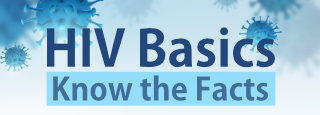Ahead of Time: Growing Older with HIV
The impact of HIV on our bodies and on the immune system as we get older is greatly affected by ageing. HIV affects each of us differently. Some people progress to symptoms very quickly, while others live for 20-plus years without any signs of immune suppression or symptoms.
Each of us ages differently as well. How well we age and how the ageing of our bodies‘ impacts upon our health is unique to each of us. Therefore, HIV infection - coupled with natural ageing - creates added challenges for maintaining good health.
Ageing is a process that is natural for everyone - it‘s the process of growing older. The process of ageing includes a reduction in strength, endurance, speed of reaction, agility, metabolism, sexual activity and hearing acuity. The bones become more brittle, the skin drier and less elastic and the teeth may shed.
Ageing is associated with, or responsible for, the ever-increasing susceptibility to disease and death that accompanies advancing age. There has been increasing discussion and great debate about what age this increased susceptibility begins, and whether this is very different for people who live with HIV.
This booklet is designed to help you understand:
The similarities between ageing and the courses of HIV infection and Acquired Immunodeficiency Disease (AIDS) suggest that HIV infection compresses the ageing process, perhaps accelerating co-morbidities (other illnesses) and frailty
How age-related conditions, such as liver disease, kidney disease, cancer, menopause, cognitive function (thinking and understanding), bone mineral density (BMD), cardiovascular disease (CVD), and lipid and glucose metabolism (process by which food is converted into energy) may be aggravated and/or accelerated by HIV infection itself and by HIV treatments—referred to as Highly Active Antiretroviral Treatments (HAART); and as Antiretrovirals (ARVs)
That Lypodystrophy (redistribution of body fat) is clinically significant because it is associated with the presence of several risk factors for cardiovascular disease such as diabetes, hypertension (high blood pressure), elevated total cholesterol (blood fats), and elevated triglycerides (fatty acids)
That Maori and Pacific Islanders are at higher risk of developing diabetes and cardiovascular disease at an earlier age
That middle-aged women, who are HIV positive, have risk factors for cardiovascular disease related both to the menopausal transition and to the HIV infection
That age is different from the length of time a person lives with HIV. For example, a 60 year old who is newly diagnosed may have very different experiences and levels of health than a 60 year old who has been diagnosed for 20 years - this person‘s experience and level of health may also be very different depending on whether they have commenced treatments or not. Planning ahead, consulting with your doctor and staying in control of your health in the best way you can, is a practical way forward.
We hope that this free publication from Body Positive will help you:

Published: Feb 2012
File Size: 8.5MB
If you would like a printed copy of this booklet sent to you instead please contact us
This booklet is a reproduction for New Zealand of an original booklet published by AFAO (Australian Federation of AIDS Organisations)
Join Body Positive
By becoming a member you will be able to access all the services we offer, as well as support and updates to help you live better.
Newsletter
Want to be keep up with whats happening at Body Positive?
Subscribe to our newsletter below by submitting your e-mail address.
Subscribe to our newsletter below by submitting your e-mail address.











